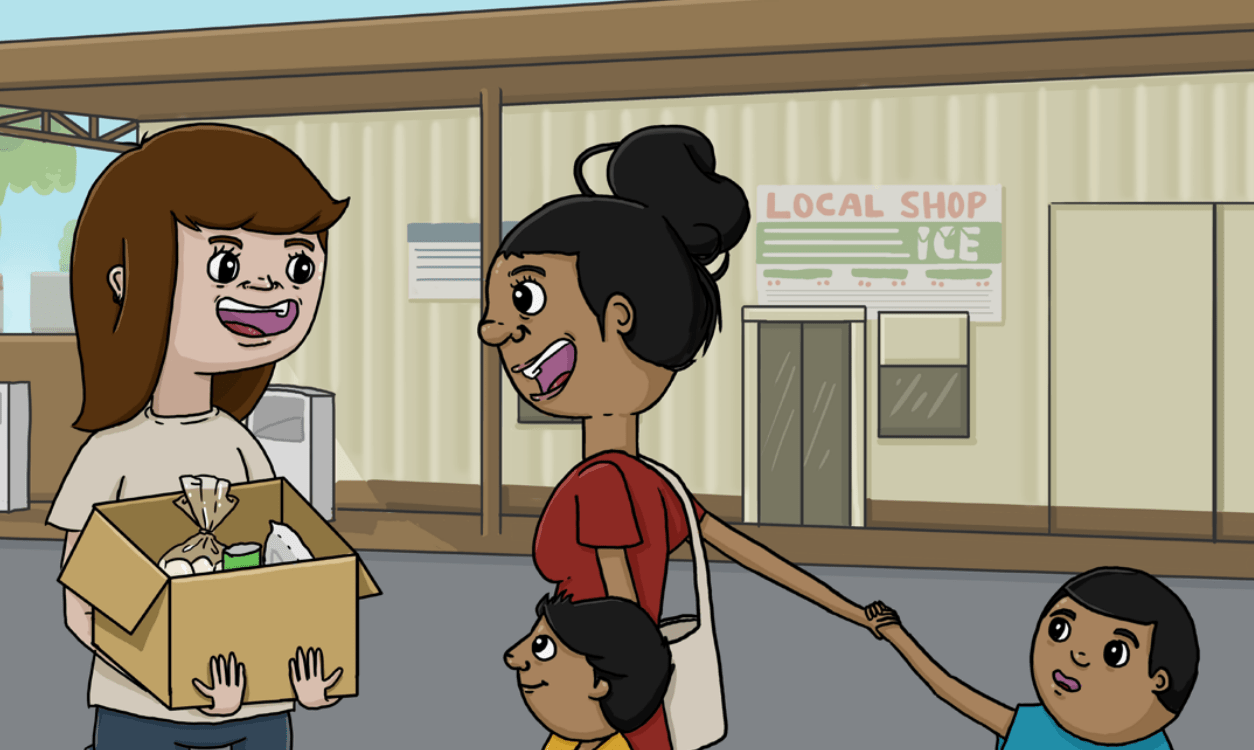On this page
The importance of walking softly
Walk softly (4.6 MB, PDF)
“People come into community with differing levels of existing cultural connection – the ones who think they know (Aboriginal communities) usually make mistakes because they think we are all the same.”
It’s often not recognised that Aboriginal cultures had social systems in place to keep the people strong. For example, established law, parenting styles (including discipline), education and training, health and wellbeing, child minding services, oral historians, musicians, artists, conservationists, astronomers, geologists and meteorologists. While times have changed, these components remain in Aboriginal cultures today. Walking softly means being open to learning about these social systems and respecting them.
“For me, walking softly is a way of saying that to be respectful takes time.”
“Don’t come running in full pelt and thinking you can change everything just like that – it’s like gentle waves coming in.”
To walk softly doesn’t mean to be timid or abandon your values and beliefs. It’s about having an awareness of your environment and placing yourself accordingly. You may be walking in a space where there are questions that can’t be answered and information that is unable to be shared, due to cultural reasons. For example, in many communities it can be forbidden to say a deceased person’s name – even if it’s your name. Some Aboriginal customs don’t allow a man to look at, or speak with, his mother-in-law.
“You need to be respectful of cultural protocols – positioning of the body, seeking permission to say your own name in a public space, seeking introduction rather than asking someone their name.”
“When I was teaching, non-Aboriginal teachers would adopt Aboriginal English in an attempt to fit in and be one with Aboriginal students and community. Aboriginal people would prefer that you remain yourself while modifying how you interact with them.”
You may have done some Aboriginal cultural awareness training while studying or as part of your professional development. If not, it’s advised this is where you start. Your training should be specific to the region where you’ll be working. If it’s a rural setting, for example, Broome, Derby, Newman or Karratha, you may be able to access localised cultural awareness training through the school. If you’re teaching on community, the best people to ask are the Cultural Advisors, Aboriginal and Islander Education Officers (AIEO), Aboriginal Teaching Assistants or the Community council.
It’s through learning cultural awareness, walking softly and building meaningful relationships that you can be a welcome and effective educator in the Kimberley and Pilbara. This will help you connect with children and young people – along with their caregivers and community – and therefore be better placed to support their social and emotional wellbeing.
“Come in with the expectation that you're going to learn something from being here, as well as you teaching the kids.”

Suggested actions
Scroll through the suggested actions below and consider whether they can be adapted or contextualised for your learning community and included in your Be You Action Plan. How can these actions be most effective? We encourage you to consider the following steps to help increase the effectiveness of whole-setting actions:
- Consult with members of the learning community, particularly Aboriginal and Islander Education Officers or Aboriginal Teaching Assistants, to develop and agree on the best approach. You could also seek input from the wider community, including Elders, families or caregivers, health and community services.
- Tailor actions to meet the needs of your learning community. For example, modify or contextualise actions to suit the age and demographics of the children or young people in your care.
- Regularly review and revisit actions to check their effectiveness and to drive continuous improvement.
Walking softly in practice
- Introduce yourself to families and caregivers in a way that’s meaningful – allow yourself to be guided by the AIEOs/ATAs to identify the most appropriate way to do this.
- While maintaining a work-life balance, be open to proactively take part in wider community events and programs that operate outside of school hours, such as youth programs and sporting events. Interschool sporting carnivals, such as basketball competitions/football camps, and youth leadership camps provide an opportunity for connection outside the classroom.
- Be willing to meet with families in informal settings outside the school or where they feel most comfortable.
- Engage with AIEOs/ATAs on a regular basis to keep informed of any significant events occurring and the potential impact of these on the classroom environment.
- Protocols concerning engaging with community members during Sorry Business/Sorry Time may vary from location to location, never assume that you know the culturally responsive way to interact, always ask.
- When making enquiries about a child or young person’s welfare, ask “what’s happening for you?” Don’t make assumptions or ask leading questions.
- Undertake ongoing cultural awareness training specific to the community and prior to engagement with families, caregivers and students, if possible.
- Be aware of your own unconscious biases and how they may affect your interactions and decisions.
- Support boys to identify the person/people they feel comfortable speaking with about their social and emotional wellbeing.
- Engage with local initiatives and organisations working collaboratively with youth promoting healthy social and emotional wellbeing practices.
- Endeavour to better understand the local history of the community if cultural awareness training is unavailable.


